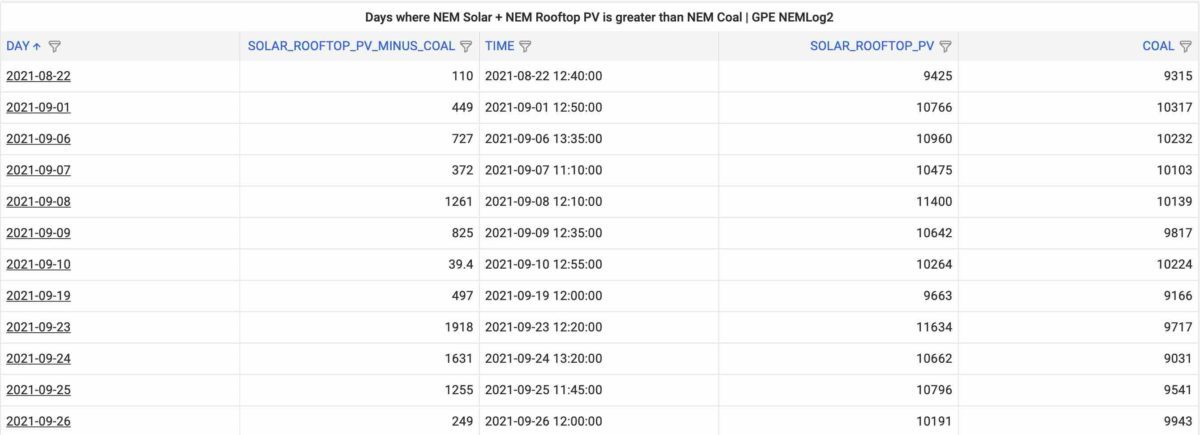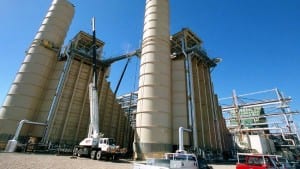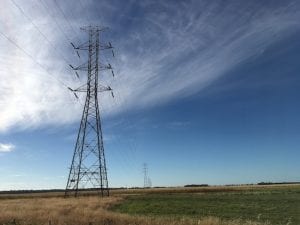Solar’s growing domination of Australia’s electricity grid is evident, even in winter. Or maybe that should be especially in winter, because on sunny, mild days when demand is low, solar modules mounted on the nation’s rooftops and racked in its paddocks are bossing the grid.
There were some excitable headlines in mainstream media this week, from the ABC and the AFR that “Solar overtakes coal for the first time in winter”. Which would be very exciting, but is not actually the case.
According to data from GPE NEMLog2, and previously reported by RenewEconomy, solar first beat coal in winter for the first time almost exactly a year ago, at 1240pm on August 22, 2021. And it then repeated the dose more than 10 times in September, 2021.

And it happened again this winter, on July 30, and last Friday and Monday.
But what’s not in dispute is that solar is now beating coal earlier in winter, and by ever increasing margins. And that’s to be expected. Since last year, nearly 3GW of rooftop solar has been added across the country, and coal outages are increasing, and the remaining available coal capacity is declining.
Liddell has already shut one of its four units and will close its last generators early next year, and by late 2025 Eraring, the country’s biggest coal plant, is also due to close, although that date is not completely locked in. By then, possibly another 6-9GW of rooftop solar will have been added to the main grid.
The peculiarity at that time may not be a question of when solar produces more than coal on sunny winter days, but when it doesn’t.
In 2025, the big new feature might be when wind and solar are producing the equivalent of 100 per cent of grid demand at any one time, as predicted by the Australian Energy Market Operator. Within a decade, two thirds of the country’s coal generators will have retired. Maybe more.
This past autumn and winter, however, may go down as the seasons when it finally dawned on most people that Australia’s coal fleet is neither the cheap nor the reliable power source it was cranked up to be.
In fact, it’s proven anything but. Regulators and market operators have repeatedly cited multiple outages and breakdowns for the shortage of supply and price spikes in recent months. At times, up to half the coal capacity in the most coal dependent states – NSW and Queensland – has not been available.
And, as a new AER report details, coal generators have not been shy of rebidding small amounts of capacity to push the wholesale electricity price up towards the market cap.
To add to the coal generator’s woes, when it has not been too sunny and mild for the coal generators to dominate the grid during the day, it has sometimes been too wet for mines to operate at full capacity and for the coal to be transported to market by trains.
That, along with the plant breakdowns, has forced the likes of EnergyAustralia and Origin Energy to buy coal, or coal power, on the open market. And it has been anything but cheap, erasing nearly all the gains made elsewhere in their businesses.
Which is why these companies, and most others, are ready to move on to greener pastures, and greener and smarter and cheaper, and more reliable solutions.










